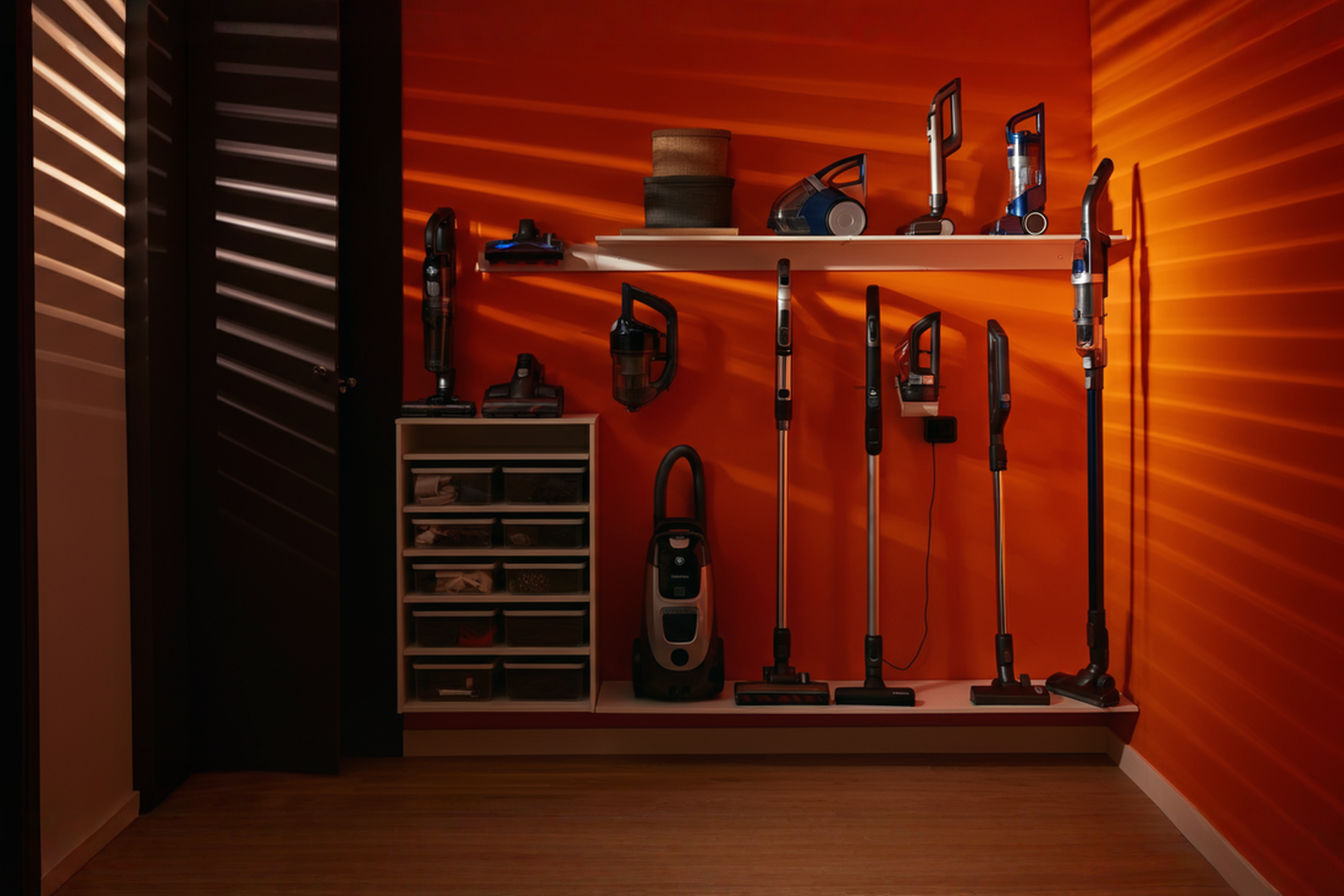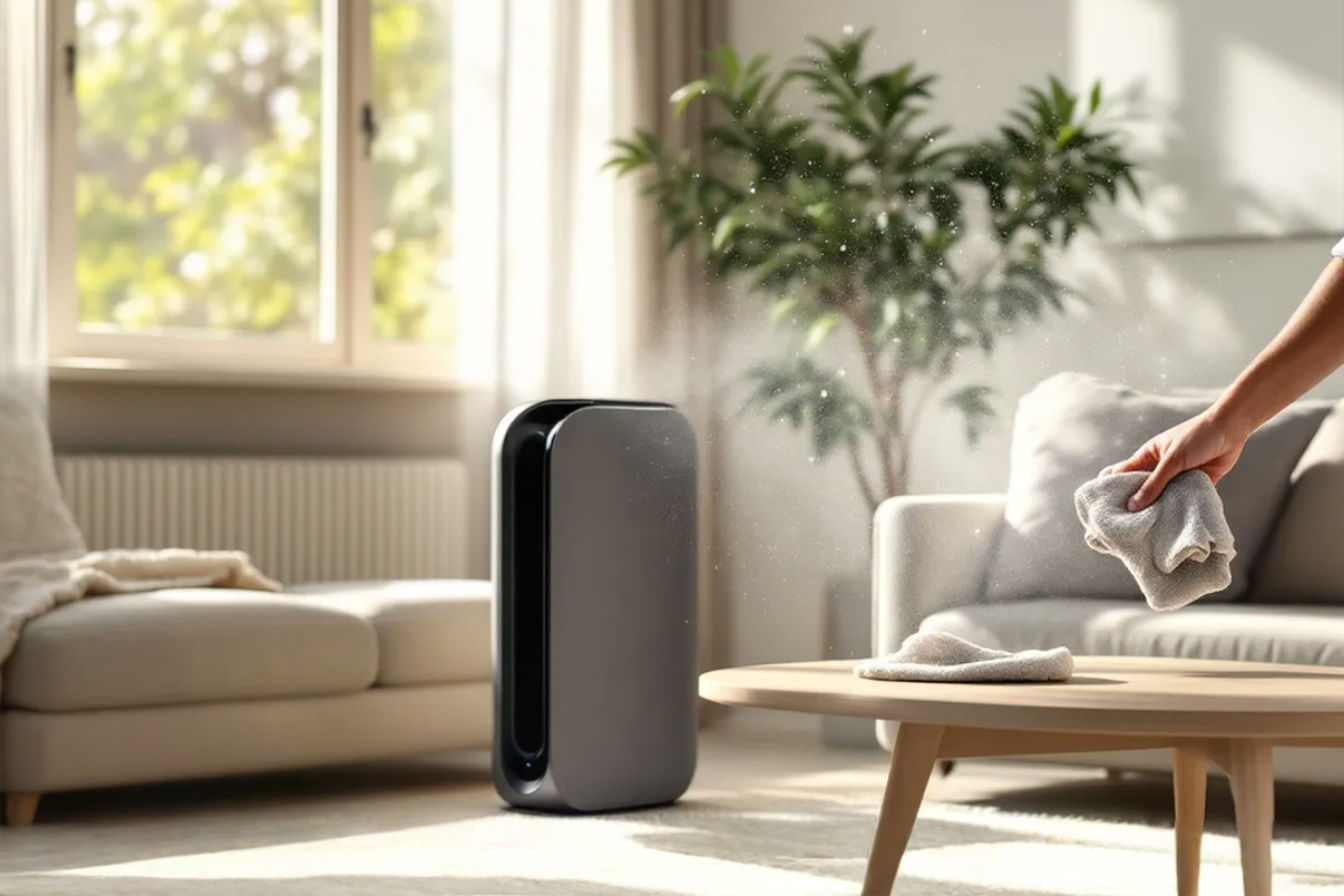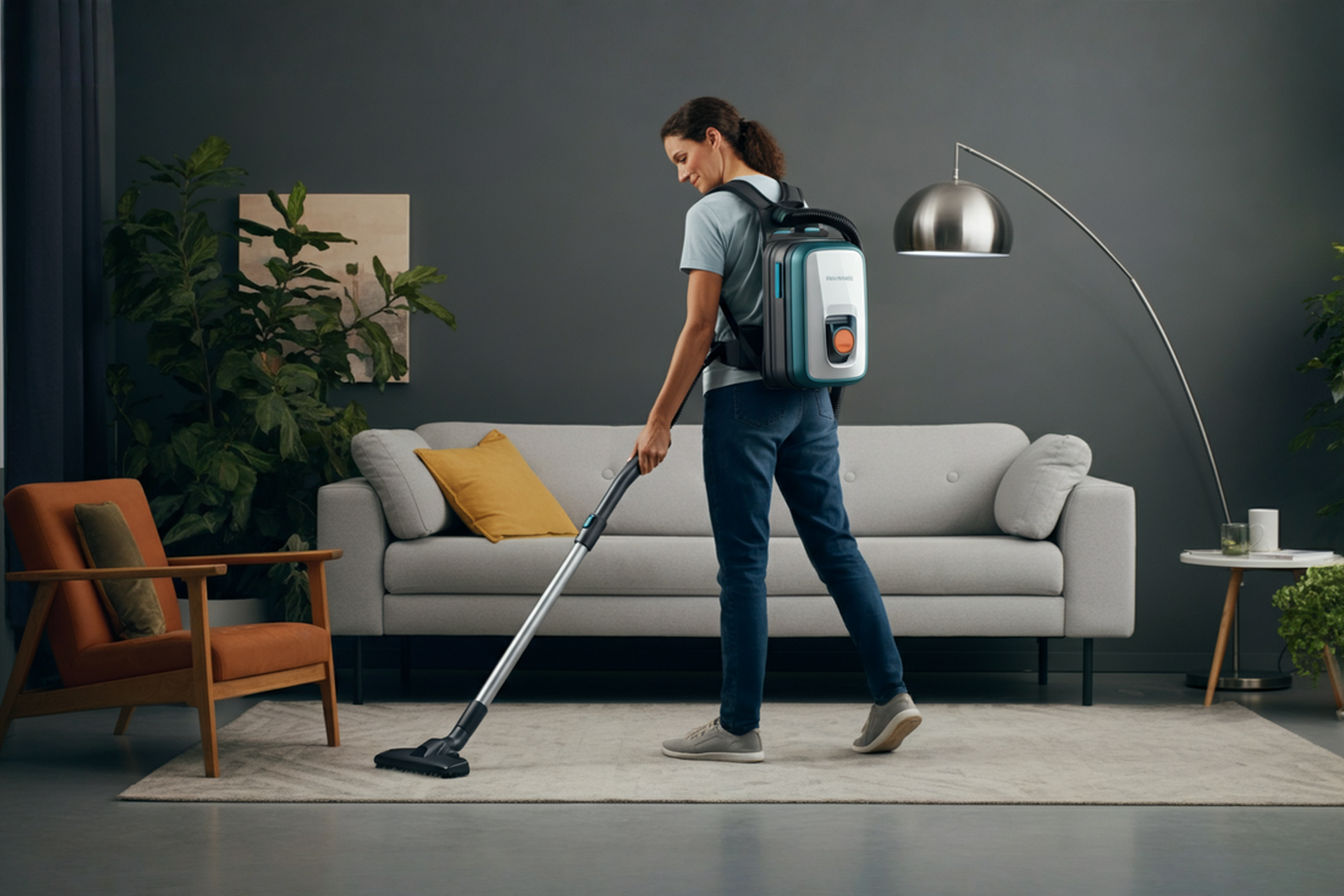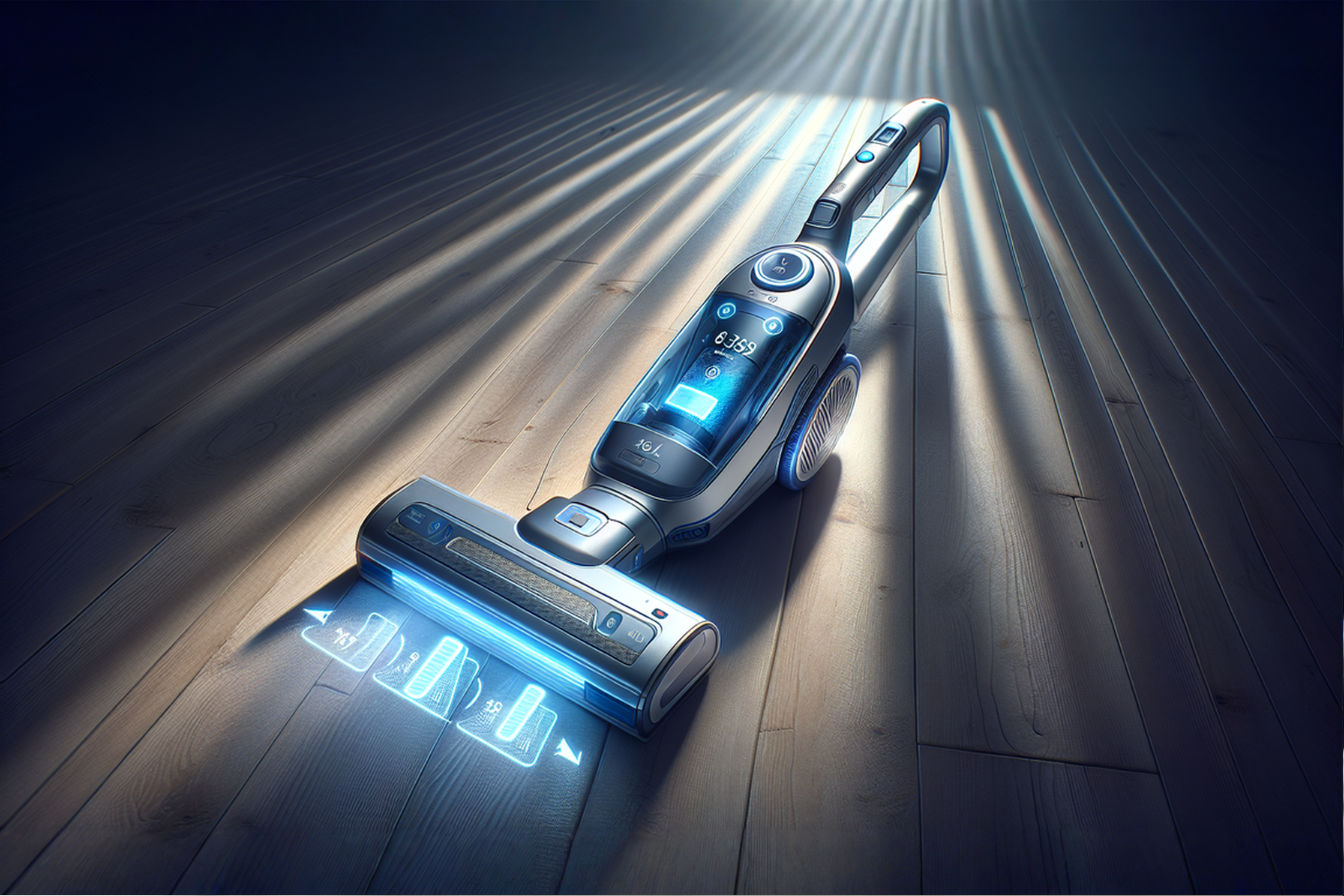Master Your Multi-Vacuum Home: Complete Storage & Organization Guide
Transform vacuum chaos into organized efficiency with our comprehensive guide to multi-vacuum storage. Learn practical solutions for every vacuum type, home size, and aesthetic preference.
This post may contain affiliate links. If you make a purchase through these links, we may earn a commission at no additional cost to you.
The convenience of modern cleaning has created a new challenge for many households – finding space for multiple vacuum cleaners. From powerful uprights for deep carpet cleaning to sleek cordless sticks for quick pickups, robot vacuums for automated maintenance, and specialized handhelds for furniture – each machine serves a distinct purpose in keeping our homes pristine. Yet as these cleaning arsenals grow, so does the struggle to store them efficiently.
Proper vacuum organization delivers benefits beyond mere tidiness. A well-designed storage system protects your investment, ensures machines remain in optimal working condition, and makes daily cleaning more convenient. When each vacuum has its dedicated space, you eliminate the frustration of tangled cords, misplaced attachments, and damaged components.
This comprehensive guide explores every aspect of multi-vacuum organization. We’ll examine storage locations, space-saving solutions for different vacuum types, maintenance stations, accessory management, and aesthetic considerations. Whether you live in a compact apartment or spacious home, you’ll discover practical strategies to transform vacuum chaos into an orderly system that enhances your cleaning routine and preserves the lifespan of your machines.
Assessing Your Vacuum Collection
Before implementing any storage solution, take time to evaluate your vacuum collection. Most households now maintain several machines that serve complementary functions. The typical collection might include a full-sized upright or canister for thorough carpet cleaning, a lightweight stick vacuum for quick daily maintenance, a robot vacuum for automated floor care, and specialized handhelds for furniture, stairs, or vehicles.
Each vacuum type presents unique storage challenges. Some require wall outlets for charging, others need accessible docking stations, while certain models feature awkward shapes that resist conventional storage. Begin by gathering all your vacuum cleaners in one location and honestly assessing what you own and regularly use.
This evaluation should extend beyond the machines themselves to include their accessories. Note all attachments, extra filters, replacement bags, cleaning tools, and specialized heads. Many homeowners discover they own dozens of vacuum components scattered throughout their homes. Creating a complete inventory helps identify which items require convenient access based on frequency of use and which can be stored more remotely.
Storage Location Considerations
The ideal storage location balances accessibility with convenience. A dedicated cleaning closet represents the gold standard for vacuum organization, providing centralized storage for all cleaning equipment. If available, dedicate adjustable shelving, wall hooks, and drawer space exclusively to your vacuum collection.
Laundry rooms offer a natural alternative, as these spaces already serve as cleaning centers. Install tall cabinets or utilize the space above washing machines for vacuum storage. In homes without dedicated utility areas, consider repurposing under-stair storage, which often provides the height needed for upright models while utilizing otherwise awkward spaces.
Garage storage works well for homes where noise considerations make storing vacuums away from living areas preferable. Wall-mounted systems keep machines off damp floors while freeing valuable square footage. For apartments or smaller homes, bedroom or hallway closets might require adaptation, such as installing a specialized vacuum hook on the interior door or adding a narrow pull-out rack along one side.
The ideal location also considers your cleaning routine. Vacuum cleaners used daily should remain easily accessible, while seasonal or specialized machines can occupy less convenient locations. Some homeowners distribute vacuum storage throughout their homes, keeping each machine near where it’s most frequently used – a handheld in the bedroom closet, a stick vacuum in the kitchen pantry, and a robot vacuum at its charging station in the living room.
Space-Saving Storage Solutions
Maximizing vertical space proves essential when organizing multiple vacuums. Wall-mounted systems represent the most efficient approach, lifting machines off the floor while displaying them in an organized fashion. Commercial vacuum holders designed specifically for different models secure machines firmly while allowing easy removal. Many systems accommodate both the vacuum and its accessories on a single mount.
Over-the-door organizers transform unused vertical space into prime vacuum storage. Look for heavy-duty options with reinforced hooks capable of supporting heavier handheld or stick vacuums. These systems work particularly well for closet doors in apartments where permanent installations might not be permitted.
Vertical storage racks provide freestanding solutions that don’t require wall modifications. These adjustable units typically feature multiple hooks at varying heights, accommodating different vacuum types on a single rack. Position these in closet corners or along garage walls to maximize floor space.
Pull-out cabinet solutions excel in kitchens, laundry rooms, or dedicated cleaning closets. Narrow cabinets with full-extension slides create accessible vertical storage that disappears when not in use. Some homeowners repurpose kitchen pantry pull-outs with adjustable dividers to accommodate various vacuum types.
Multi-purpose furniture with integrated vacuum storage merges organization with design. Storage benches with deep compartments, hallway cabinets with specialized interiors, and utility furniture designed for cleaning equipment all provide discreet solutions that maintain aesthetic appeal while keeping vacuums accessible.
Organizing by Vacuum Type
Different vacuum designs require tailored storage approaches. Upright vacuums, with their tall, often top-heavy design, benefit from floor-based storage with stabilizing elements. Dedicated stands prevent tipping, while wall-mounted clips secure the upper portion of the machine. Some homeowners create simple wooden bases with cutouts matching the vacuum footprint for secure, stable storage.
Stick and cordless vacuums present unique challenges due to their awkward proportions and charging requirements. Wall-mounted docking stations provide the ideal solution, keeping these machines upright while maintaining battery charge. For closet storage, tension rods with specialized hooks offer a rental-friendly alternative that keeps stick vacuums elevated and accessible.
Robot vacuum organization centers around charging dock placement. These machines require clear paths for returning to their bases after cleaning cycles. Create dedicated docking zones with nearby storage for replacement parts and filters. Some homeowners design recessed docking stations in kickplates beneath kitchen cabinets or custom furniture to maintain a streamlined appearance.
Handheld vacuums require compact storage that maintains accessibility. Drawer organizers with custom dividers, small wall hooks in convenient locations, or dedicated charging stations in kitchen or bathroom cabinets keep these machines ready for quick cleanups. Consider grouping handhelds with their accessories in labeled bins if used less frequently.
Canister vacuums, with their separate components and hoses, benefit from unified storage solutions. Custom shelving with hose hooks creates organized storage that prevents tangling and damage. Some systems include cylindrical guides that maintain the natural curve of the hose, preventing kinks and extending its lifespan.
Creating a Vacuum Maintenance Station
A dedicated maintenance station transforms vacuum storage from passive housing to active care. This central hub for vacuum upkeep ensures machines remain in optimal condition while streamlining routine maintenance tasks. Even a small section of shelving can become an effective maintenance center when thoughtfully organized.
The ideal station includes workspace for cleaning and maintaining vacuum components. A washable mat or tray provides a designated area for emptying canisters, replacing bags, or cleaning filters. Nearby hooks hold cleaning brushes specifically for vacuum maintenance, while sealed containers store replacement parts and disposable components.
For homes with multiple cordless vacuums, a charging station with adequate outlets keeps machines powered and ready. Label each charging dock clearly and consider power strips with individual switches to manage energy consumption. Some homeowners install small drawer systems beneath charging areas to house batteries, power adapters, and charging documentation.
Maintenance tracking completes the system, ensuring regular care for each machine. A simple wall-mounted chart or digital reminder system helps track filter replacements, belt changes, and other maintenance tasks across multiple vacuums. Storing user manuals in water-resistant document holders provides quick reference when troubleshooting or performing maintenance.
Accessory Management Systems
The proliferation of vacuum attachments often exceeds the machines themselves, creating significant organization challenges. A comprehensive accessory management system prevents lost parts while ensuring you can quickly find the right attachment for each task.
Wall organization works exceptionally well for vacuum accessories. Pegboard systems with custom holders accommodate oddly shaped attachments, while labeled hooks ensure each piece returns to its designated spot. Clear silhouettes behind each attachment make identification easy and signal when items are missing.
Drawer divider systems transform deep drawers into customized accessory storage. Adjustable dividers create compartments sized precisely for each attachment, while drawer labels identify contents at a glance. This approach works particularly well for households with children, as it keeps potentially fragile parts safely contained.
Labeled container storage suits accessories used less frequently or seasonally. Clear bins with secure lids protect components from dust while allowing visual identification. Group accessories by vacuum type or cleaning function, and include silica gel packets to prevent moisture damage during long-term storage.
Custom pegboard solutions provide highly visible and accessible storage for frequently used attachments. Install these systems inside closet doors, on utility room walls, or in garage cleaning centers. Color-coding hooks or backgrounds by vacuum type creates an intuitive system that simplifies selecting the correct attachment.
Vacuum-specific attachment organizers designed for particular models ensure compatibility and completeness. Many manufacturers offer wall-mounted racks precisely fitted to their accessories, while aftermarket organizers accommodate popular vacuum models. These specialized systems often include the added benefit of securely gripping unusual attachment shapes.
Aesthetic Considerations
The decision to conceal or display your vacuum collection depends on both practical concerns and design preferences. Hidden storage maintains a cleaner aesthetic but sometimes sacrifices accessibility. Display storage emphasizes convenience but requires thoughtful integration with your home’s design.
For those prioritizing concealment, dedicated cabinets with doors keep vacuums hidden while maintaining organization. Custom closet systems with vacuum-specific components balance accessibility with aesthetics. Some homeowners repurpose furniture like armoires or entertainment centers into dedicated cleaning storage that blends seamlessly with room decor.
Those with premium vacuum collections sometimes prefer display approaches. Modern vacuum designs, particularly high-end models with distinctive appearances, can become design elements themselves when properly displayed. Clean wall-mounted systems with coordinated backing colors transform utilitarian objects into functional art.
The aesthetic approach should match your overall home design. Contemporary spaces might feature minimalist wall mounts in matching finishes, while traditional homes benefit from cabinetry that conceals modern cleaning equipment. Budget-friendly aesthetic improvements include adding coordinated fabric curtains to open shelving, painting pegboard in complementary colors, or selecting storage containers that match existing decor elements.
Organization Systems by Home Size
Limited square footage in small apartments demands creative vacuum storage solutions. Vertical space becomes essential, with over-door hangers, tension rod systems, and wall mounts maximizing available area. Consider multi-functional furniture like ottomans with storage compartments that accommodate smaller vacuum models. Under-bed storage containers with wheels provide accessible housing for machines used less frequently.
Medium-sized homes offer more flexibility but still benefit from thoughtful organization. Repurpose linen closets with vacuum-specific shelving and hooks, or create combination laundry/vacuum centers with integrated storage for all cleaning supplies. Corner cabinet solutions in utility rooms efficiently use often-wasted space while keeping vacuums accessible.
Large homes with multiple cleaning zones require distributed vacuum storage. Create satellite cleaning centers on each floor, each equipped with the most appropriate vacuum type for that area. Central supply stations house replacement parts and maintenance supplies, while individual cleaning zones maintain ready access to frequently used machines.
Multi-level homes benefit from strategic vacuum distribution. Store heavy upright models on the floor where they see most use, typically the main living level. Position lighter stick vacuums on upper floors where maneuverability matters more than power. Basement or garage storage works well for specialized or seasonal vacuums, with clear labeling ensuring you can quickly retrieve the right machine for each task.
Maintenance and Accessibility Balance
Effective vacuum organization balances preservation with convenience. Machines used daily deserve prime storage locations with easy access, while specialized equipment can occupy more remote spaces. Consider your cleaning routine when positioning each vacuum – handheld models for quick countertop cleanups might belong near kitchen areas, while deep-cleaning uprights can occupy more distant storage.
Some homes benefit from seasonal rotation systems. Heavier deep-cleaning machines might see more use during spring cleaning or winter months when homes remain closed, while lighter maintenance vacuums suffice during periods of lighter use. Establish a seasonal storage area for out-of-rotation machines, complete with proper preparation protocols to ensure they remain in working condition.
The accessibility versus concealment balance often comes down to personal preference. Some homeowners prioritize immediate access to cleaning tools, while others prefer maintaining a certain aesthetic. The ideal system incorporates elements of both, keeping frequently used machines readily available while providing attractive, protective storage for other models.
Creating efficient cleaning workflows represents the ultimate goal of vacuum organization. Analyze your typical cleaning patterns and position machines to minimize unnecessary movement. Storing a stick vacuum near high-traffic areas supports quick daily maintenance, while positioning robot vacuum docking stations centrally maximizes their autonomous coverage.
DIY Organization Projects
Custom wall mounting brackets tailored to specific vacuum models offer perfect fits that commercial solutions might not provide. Simple brackets can be crafted from wood, metal, or high-strength plastic and finished to match your decor. Create templates based on your specific vacuum models, ensuring secure support at multiple points for heavier machines.
Repurposed furniture offers character and function for vacuum storage. Vintage armoires transform into dedicated cleaning centers with minimal modification. Add interior hooks, install custom shelving sized for your specific models, or create specialized compartments for accessories. Cabinet doors can host pegboard inserts for attachment organization while maintaining an attractive exterior appearance.
Budget-friendly organization hacks make vacuum storage more accessible. Repurpose magazine holders as stick vacuum stands, use shower curtain rings on closet rods to hang lightweight attachments, or transform plastic pipe sections into wall-mounted holders for extension wands. Command hooks in strategic locations provide immediate, rental-friendly solutions for hanging cordless models.
Tool-free storage solutions benefit those with limited DIY skills or rental restrictions. Tension rod systems with specialized hooks create vertical storage between studs in closets. Freestanding organizers with adjustable compartments accommodate various vacuum types without permanent installation. Over-door systems with reinforced hooks support even heavier models without requiring wall modification.
Conclusion
Organizing multiple vacuum cleaners requires thoughtful planning, but the benefits extend far beyond mere tidiness. A well-executed storage system prolongs the life of your machines, streamlines your cleaning routine, and ensures you can always find the right vacuum and attachments for each task. By assessing your specific needs, implementing appropriate storage solutions, and creating maintenance systems, you transform cleaning equipment from scattered clutter into an efficient household resource.
The ideal vacuum organization system reflects your unique cleaning approach, home configuration, and aesthetic preferences. Whether you choose wall-mounted displays that showcase premium machines or concealed storage that maintains a minimalist appearance, the principles of accessibility, protection, and convenience remain paramount. Experiment with different approaches until you discover the perfect balance for your home and cleaning routine.
As your vacuum collection evolves, be prepared to adapt your organization system accordingly. New machines may require different storage approaches, while changing household needs might necessitate redistribution of your existing collection. The effort invested in thoughtful vacuum organization pays dividends in machine longevity, cleaning efficiency, and household harmony – making it well worth the initial planning and implementation.







